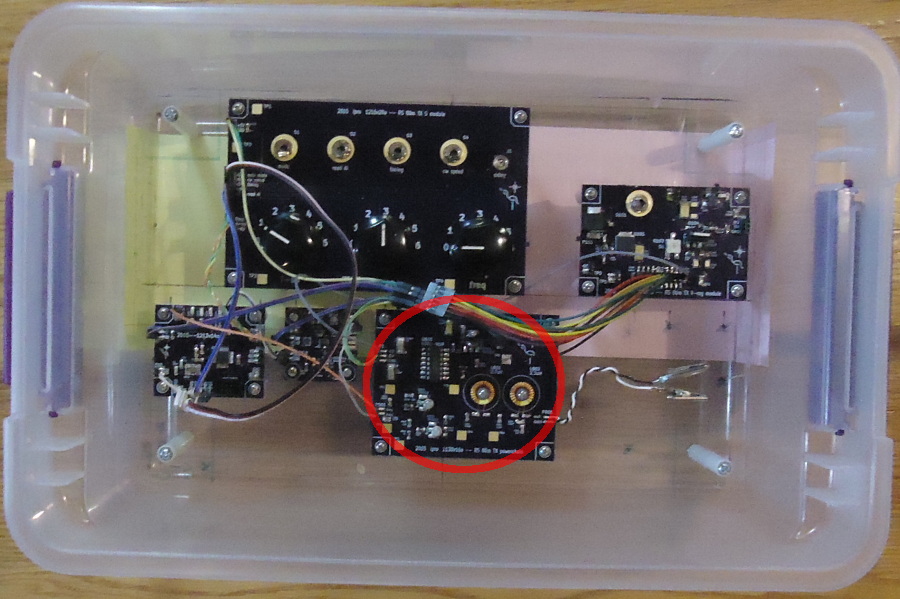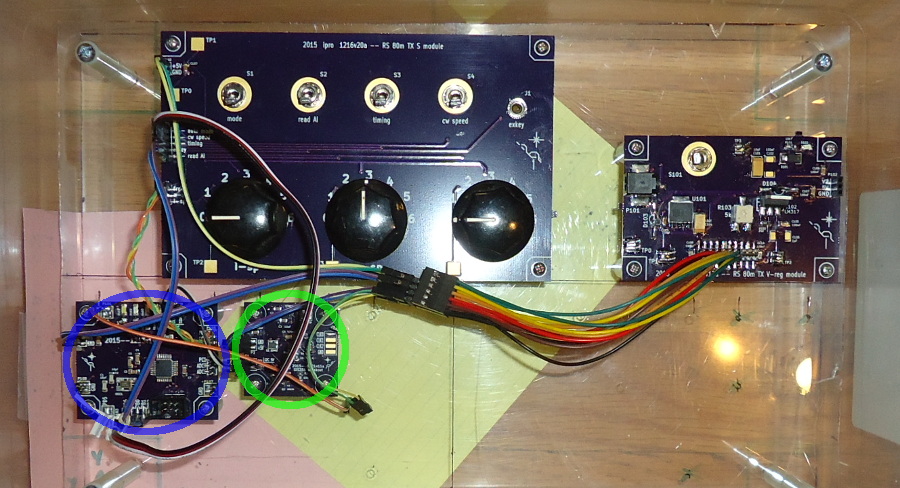73 — Starting on the 2m transmitter - modules!
2016-05-22. By Patrick.

Fig. 1. Development setup for "by-OSH Park-module" 80m transmitter. Almost the entire RF powerchain is on the single module circled in red. And that's the only 80m-specific part.
Two weeks ago, I finally got back to developing the 2m transmitters we'll use for ARDF. Why develop a new one? The principles are the same as for the 80m transmitters. We want a transmitter that will do multiple frequencies, that we can program as needed, and that we can fix ourselves. There isn't much out there that is specific for ARDF. Of the stuff that is out there, none of it comes close to our basic requirements. Not from where we stand anyway.
Basically, we have much already done. Everything up through the oscillator is done. It will be the same as for the 80m transmitter. The Si5351 can easily go over the 144 MHz that are needed.
And this is where the power of modules comes in. The development of the 80m transmitter started with ugly construction. Then an OSH Park PCB for each module. And finally a single board. Well, the original 80m "by-OSH Park-module" transmitter was just lying around. So I removed the entire RF powerchain, reprogrammed the ATmega to instruct the Si5351 to put out 144 MHz... Et voila! We're half way there.
Actually, there is a fair bit to do. The output did not look close the the nice stable squarish wave we get at 80m. And the 2m signal will have to be keyed by amplitude modulation rather than simply on-off carrier control. But at least, we get to start right at the fun part, controlling and amplifying the RF.

Fig. 2. Ready for 2m development. The 80m RF parts are gone. The top two modules are the voltage regulator on the right and the switches module on the left. These are not really important. They will be exactly the same in the 2m transmitter. The really nice part is having the ATmega module (blue circle) and Si5351 module (green circle) all ready to go.